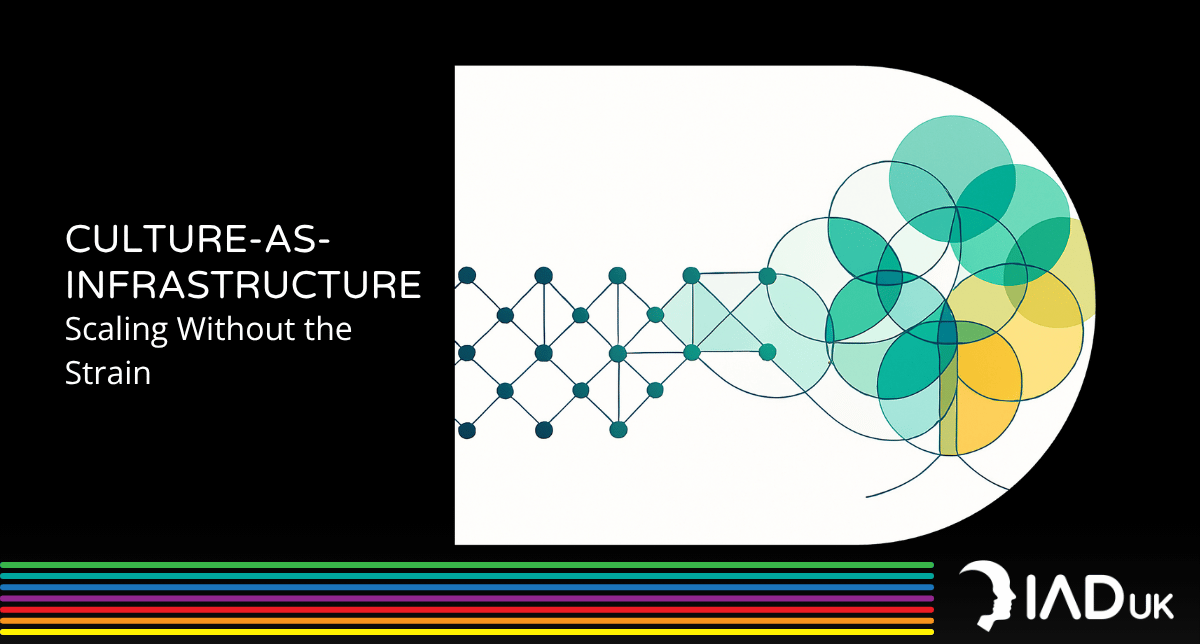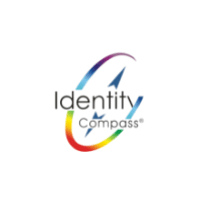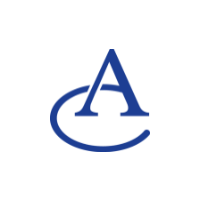How Dynamic Intelligence Drives Engagement and Retention
Reimagining Employee Engagement to Build a Resilient and Motivated Workforce

The start of a new year is often a time of reflection—not just for individuals, but for organisations too. For employees, January presents a moment to reassess their career trajectories, considering whether their current roles align with their goals and aspirations. For organisations, this period marks a critical opportunity to re-engage and retain top talent.
Employee disengagement often begins not with dissatisfaction, but with a lack of alignment. When employees feel their roles don’t fully utilise their strengths or fail to provide meaningful growth opportunities, they start to look elsewhere. How can organisations create an environment where employees feel valued, motivated, and truly connected to their work?
Dynamic Intelligence, delivered through the Dynamic Intelligence Development System™ (DIDS™), offers a solution. By matching roles to employees’ cognitive profiles and aligning development strategies with business objectives, DIDS™ provides a framework for fostering engagement and retention. It’s not just about keeping people in their seats—it’s about inspiring them to thrive within your organisation.
This article explores how DIDS™ helps build a resilient and motivated workforce, equipping organisations to meet the challenges of 2025 and beyond.
The Engagement and Retention Challenge
The workplace of 2025 presents a unique set of challenges. Employees’ expectations are evolving rapidly, driven by changing work dynamics, technological advancements, and the desire for roles that offer more than just a paycheque. Hybrid work has blurred the lines between professional and personal life, pushing employees to seek purpose and fulfilment in their careers.
January, in particular, is a critical juncture. After the holiday reset and with the setting of New Years’ resolutions, many employees reassess their priorities, asking themselves whether their current roles align with their goals. This reflective period often leads to disengagement if employees feel stagnant, undervalued, or misaligned with their organisation’s vision.
Traditional engagement strategies—like periodic performance reviews or generic training programs—fall short in addressing these deeper needs. These methods often focus on surface-level issues rather than understanding the root causes of disengagement, such as mismatched roles, unfulfilled growth potential, or lack of meaningful development opportunities.
Dynamic Intelligence provides a transformative approach to tackling these challenges. By understanding employees’ cognitive strengths and aligning their roles and development paths accordingly, organisations can create an environment where individuals feel genuinely connected to their work. This alignment fosters not only engagement but also loyalty and a shared sense of purpose.
As the new year begins, the question isn’t just how to retain employees—it’s how to re-engage them in a way that inspires long-term commitment and productivity.
How Dynamic Intelligence Boosts Engagement and Retention
Dynamic Intelligence offers a powerful framework for addressing engagement and retention challenges by focusing on what truly drives satisfaction and loyalty: alignment. When employees are placed in roles that match their cognitive strengths and are given opportunities to grow in meaningful ways, they don’t just perform better—they feel better.
At the heart of Dynamic Intelligence Development System (DIDS) is cognitive profiling, a tool that identifies how individuals think, process information, and approach challenges. This understanding enables organisations to:
Match Roles to Strengths: Imagine an employee who thrives in structured problem-solving being placed in a role requiring high ambiguity tolerance. Misalignments like this lead to frustration and disengagement. DIDS ensures the right fit, improving satisfaction and performance.
Foster Role Engagement: Employees who feel their work leverages their strengths are more motivated and connected to their roles. This connection is a key driver of engagement.
Reduce Turnover: When employees see a clear alignment between their abilities and their responsibilities, they are less likely to seek opportunities elsewhere.
Beyond role alignment, Dynamic Intelligence enhances engagement through strategic alignment of developmental goals. When learning and development initiatives are tied directly to business objectives, employees see their growth as integral to the organisation’s success. This creates a sense of purpose and shared mission.
Think of it like assembling a puzzle. Each piece (employee) has a unique shape (cognitive profile), and finding the right fit creates a cohesive, high-performing team. When the pieces are aligned, the picture—your organisation—becomes clearer and more powerful.
Dynamic Intelligence doesn’t just improve individual satisfaction; it transforms how teams collaborate, innovate, and thrive together. By leveraging the principles of DIDS, organisations can turn the challenge of engagement into an opportunity for growth and resilience.
Fostering Engagement with DIDS™
Understanding how Dynamic Intelligence can drive engagement and retention is one thing; implementing it is another. The Dynamic Intelligence Development System™ (DIDS™) provides actionable steps to help organisations create meaningful connections between employees’ roles, cognitive profiles, and developmental opportunities.
1. Conduct Cognitive Assessments to Inform Role Fit
Many disengaged employees are simply in roles that don’t align with the way they think. Cognitive profiling helps uncover each employee’s natural thinking patterns, problem-solving approaches, and adaptability. By understanding these traits, organisations can assign roles that allow individuals to thrive.
Use DIDS™ assessments to map Thinking Styles and compare them with role requirements. Adjust responsibilities or offer tailored support to bridge gaps where misalignment exists.
Employees whose roles align with their cognitive strengths are more confident, less stressed, and more motivated—key ingredients for engagement and retention.
2. Develop Personalised Growth Plans Aligned with Business Goals
Employees want to grow, but they also want to see how that growth contributes to something bigger. Personalised development plans that align with both individual aspirations and organisational objectives create a clear path for advancement.
Use insights from cognitive assessments to identify skills or capabilities an employee could develop to contribute more effectively to strategic goals. Incorporate these into tailored L&D programs.
When employees feel supported in their personal goals and see how their growth benefits the organisation, they’re more likely to stay engaged and committed.
3. Foster a Culture of Continuous Development
Engagement isn’t a one-time fix—it’s an ongoing process. Organisations that foster a developmental culture—one focused on feed-forward thinking and adaptability—create an environment where employees feel empowered to evolve continuously.
Implement regular growth-focused conversations, emphasising future opportunities rather than past performance. For example, instead of focusing solely on “what went wrong,” ask, “what could we do differently next time?”
A culture of growth reduces stagnation and ensures employees remain engaged, even as challenges and opportunities shift over time.
By implementing these strategies, organisations can ensure employees feel valued, challenged, and aligned with their roles and the broader mission. DIDS™ provides a roadmap to make engagement and retention a strategic capability, turning these challenges into opportunities for lasting success.
The Long-Term Benefits
Engagement and retention aren’t just immediate priorities—they’re investments in an organisation’s long-term success. When employees feel aligned, valued, and supported, the benefits extend far beyond day-to-day productivity.
One of the most tangible advantages is the reduction in turnover costs. High retention rates save organisations the time and expense associated with recruitment, onboarding, and training new hires. But the impact goes deeper: retained employees carry institutional knowledge, fostering consistency and stability within teams.
Beyond cost savings, engaged employees are more likely to innovate and take ownership of their work. A workforce driven by Dynamic Intelligence isn’t just better equipped to handle complexity; it thrives in it. Teams collaborate more effectively, problem-solve with greater nuance, and adapt to shifting priorities without losing focus.
Moreover, organisations that prioritise engagement through Dynamic Intelligence build stronger employer brands. In competitive talent markets, being known as a place where employees grow and succeed is a powerful differentiator.
Dynamic Intelligence doesn’t just create engaged employees; it creates resilient organisations. By embedding principles like cognitive alignment, continuous development, and intentional growth, businesses can build cultures that withstand uncertainty and embrace opportunity.
The benefits of engagement are exponential. Are you ready to transform your organisation into one that doesn’t just survive change—but leads through it?
As employees reassess their priorities in the post-holiday period, organisations face a critical moment to foster engagement and retention. Traditional strategies focused solely on skills or surface-level fixes are no longer enough. Dynamic Intelligence offers a transformative approach by aligning roles, goals, and development opportunities with employees’ unique cognitive profiles.
The result is a workforce that is not only engaged but resilient—ready to adapt, innovate, and thrive in complexity. When employees feel valued and connected to their roles, the benefits ripple across the organisation, driving long-term success.
Now is the time to act. Empower your workforce to thrive in 2025 by embracing Dynamic Intelligence.
Schedule a call to explore how DIDS can enhance your engagement strategy.
Alternatively, why not download our comprehensive brochure




